Laboratory
Office room for all members (Room 311)
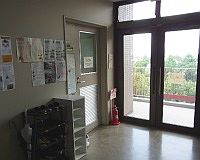
Entrance
After getting off the elevator on the third floor, please turn right and go straight ahead. The room 311 is located in the end of the corridor.
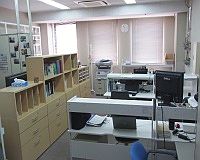
Students and technical staffs area
All member have their own desk.
There is the desk of Dr. Makiura next to it, so that everyone can freely talk and discuss.
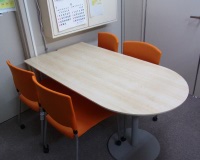
Meeting space
In this place, there is a large-screen monitor. This is used for brief meetings and lab parties.
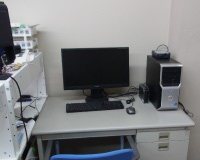
Shared PC
This is the shared Windows PC of lab members.
This PC is installed “Materials Studio” which can perform molecular modeling, build crystal structure, and so on.
Therefore, this PC has a high quality.
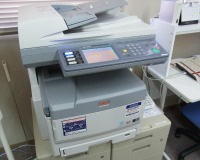
Color laser printer
This is a network printer bearing copying, scanning, and faxing functions.
Experimental room for fabricating and evaluating thin films (Room 313)
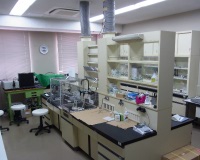
Overall photo
he center lab desk, fume hood, and gas piping are set up in this room. The preparation of solution, fabrication of thin films, and optical evaluation are mainly conducted in this room.
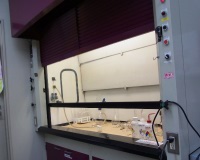
Fume hood
The preparation of solution, the filtration of crystals, and so on employing organic solvents are conducted.
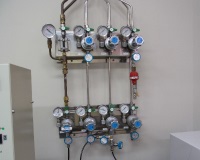
Gas piping
The pipes for the compressed air, vacuuming, argon, helium, oxygen, and carbon dioxide are set up.
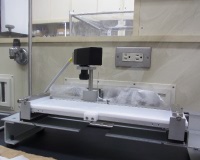
Two thin film fabrication devices on liquid surface
KSV minitrough system
It is also called “Langmuir-Blodgett (LB) film fabrication system”.
A PTFE Langmuir trough (shallow container) is filled with liquid as a subphase. The molecule is spread onto the subphase, and the thin film is fabricated on liquid surface.
Two barriers which are set up at right and left of the Langmuir tough are moved, and the forming state of thin film is investigated by measuring the surface pressure.
The prepared thin film is deposited onto the substrate by the horizontal dipping method.
The movement of barriers and dipper is controlled by PC.
There are two systems bearing same specifications.
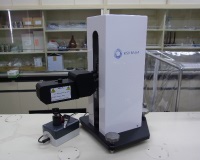
Brewster angle microscope
KSV NIMA MicroBAM
The formation of thin film on liquid surface is observed by utilizing reflection phenomenon of light. This microscope with the thin film fabrication system makes automatic shooting and video recording possible.
“What is BAM (Brewster Angle Microscope)?” ![]()
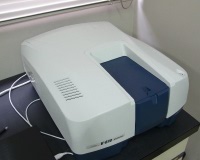
UV-vis-IR absorption spectra measurement device
JASCO V-670 spectrophotometer
The absorption spectra is measured by irradiating UV-vis-IR light (measurement wavelength range: 190‒2700 nm).
The measurement of not only solution but also thin film is possible. The diffuse reflectance spectra of powder and colloid solution can be also measured by employing an integrating sphere.
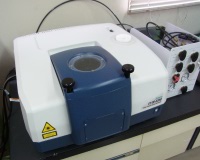
IR absorption spectra measurement device
JASCO FT-IR 6200 spectrometer
The absorption spectra is measured by irradiating IR light (measurement wavenumber range: 7800‒350 cm-1).
The sample chamber is vacuumed and displaced by inert gas, which eliminates the effect of water and CO2 in the atmosphere. By the transmission method, the measurement of sample powder diluted with KBr (In our lab, there is a KBr plate set which can prepare KBr samples briefly) and thin films.
Moreover, by the ATR method, the special measurement of microscale sample and sample surface is also possible.
As the prism for ATR, germanium and diamond are prepared.
In the transmission and ATR methods, this system is fixed so that the place of sample is kept sealed.
Thus, the active sample can be measured by preparing in the glove box.
In addition, by the RAS (Reflection-, Absorption Spectroscopy) method, the absorption spectra of super-thin film prepared on the substrate including gold can be measured, too.
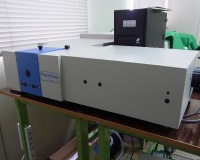
Fluorescence spectra measurement device
HORIBA SPEC Fluorolog-3
The sample is irradiated by the excited light whose source is 450 W xenon lamp, and the dispersion of the obtained fluorescence affords spectra.
The double grating spectroscope is set up at the both sides of excited light and fluorescence, which removes the stray light.
Thus, spectra can be measured sensitively.
The detecting correspondence wavelength range of the fluorescence side is from 240 to 850 nm. By employing the dedicated cryostat and temperature controller, the measurement at a temperature of liquid nitrogen is possible.
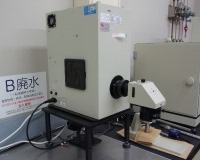
Pseudo sunlight irradiation device (solar simulator)
BUNKOUKEIKI OTENTO-SUN III
This device achieves the pseudo sunlight by employing xenon lamp and AM 1.5G filter.
Irradiation to solar cells et al. makes the characteristic evaluation possible.
Moreover, this device is AAA type solar simulator according to JIS C8912 and C8933, and the characteristic evaluation of solar cells according to universal standard is possible by using high-accuracy I-V measurement system.
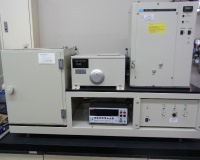
Spectral sensitivity measurement device (Action spectra measurement device)
BUNKOUKEIKI SM-250 hyper monolight system
The current value of sample is measured based on the amount of irradiation light at each wavelength, and the spectral sensitivity of photoelectric conversion element including solar is investigated (wavelength range: 300‒1150 nm).
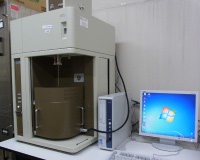
High-precision gas/vapor adsorption amount measurement device
MicrotracBEL BELSORP-max
The specific surface area and micropore distribution are investigated by adsorbing gas and vapour into the sample and measuring the amount of adsorption.
The simultaneous measurement of three samples in case of the simple mode and two samples in case of high-precision is possible, respectively.
The heater which can heat up to 450°c is attached, thus the adsorption measurement without taking out the sample is possible by pretreating in the device body. This is why the high-precision measurement of the adsorption amount at low pressure region is possible.
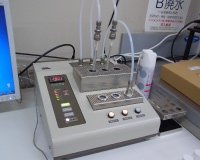
Pretreatment device for adsorption measurement
MicrotracBEL BELPREP-vacII
This is the vacuum heating pretreatment device for the measurement of gas/vapor adsorption amount.
The pretreatment of three samples can be conducted simultaneously.
The max heating temperature is 430°c.
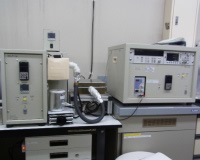
Nanosensing adsorption measurement system
MicrotracBEL BELQCM
Vapour sorption of a film fabricated on a quartz crystal substrate can be measured by a quartz crystal micro balanece method.
6 samples are analysed simultaneously.
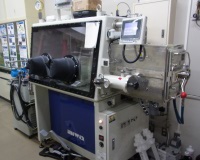
Auto gas circulation glove box
MIWA DBO-1KP-OFUMU
We treat air sensitive sample in the glove box in which dried Ar is replaced.
Two gloves, an organic solvent trap and a heat functioned side box are installed.
In addition, a precision balance and a press tableting machine are planed in the box.
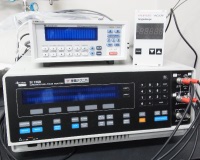
Impedance/Gain-Phase Analyzer
solartron 1260
Impedance of various materials we research such as organic-inorganic hybrid materials, nanomaterials and porous materials is measured.
Temperature dependence of the impedance can be automatically analysed with a cryostat and a temperature controller (LakeShore 335).
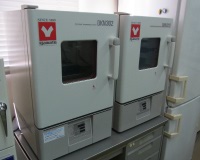
Constant temperature Oven
Yamato Scientific Co., Ltd. Forced convection ovens of standard type DKN302
This is the forced convection oven which keep the temperature constant in the oven.
This oven is mainly used for hydrothermal synthesis of crystals. (temperature region: from rt to 260°c)
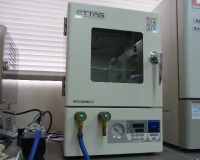
Vacuum dryer
AVO-200NS-D
The inside of dryer is kept constant temperature and vacuumed, and the sample is dried. (temperature region: from rt to 220°c))
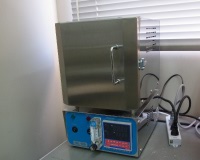
Electric furnace
FULL-TECH FT-101FMW
This furnace is employed for the synthesis of ceramic and burning of titanium dioxide film which require high-temperature treatment (temperature region: from rt to 1200°c).
The rapid heating, which rise a temperature until 1000°c for 15 minutes, is possible.
The atmosphere in the oven can be also controlled by employing nitrogen, oxygen, argon, and so on through temperature control program and flow valve.
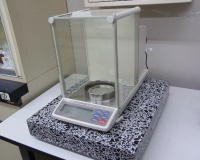
Precision weighing machine
The max measurable masses are 101 g in case of 0.01 mg scale range and 250 g in case of 0.1 mg scale range, respectively.
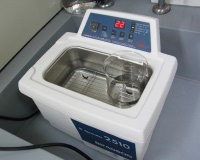
Ultrasonic bath
This is the ultrasonic bath which can control temperature and time.
Clean room (Build C10, 2nd floor)
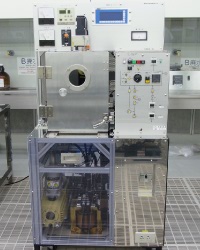
Resistance heating vacuum deposition system
Design and Technology, RMDO-01
Thin films of metals and organic compounds are fabricated by vacuum deposition.
Two evaporation sources can be set in the chamber. The chamber door is front-open style.
We can easily change the substrates and the evaporations sources.

Surface plasma treatment system
FEMTO SCIENCE CUTE-MP
ubstrate surface is treated with plasma.

Spin-coater
MIKASA MS-A100
Thin films of organic polymers are spin coated on solid substrates.
Shared equipment of NanoSquare Research Institute
Various shared equipments are prepared in the same building (C10 building).
https://www.nanosq.21c.osakafu-u.ac.jp/ttsl/en/en/